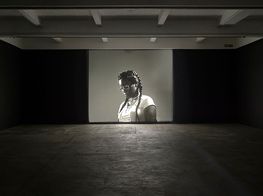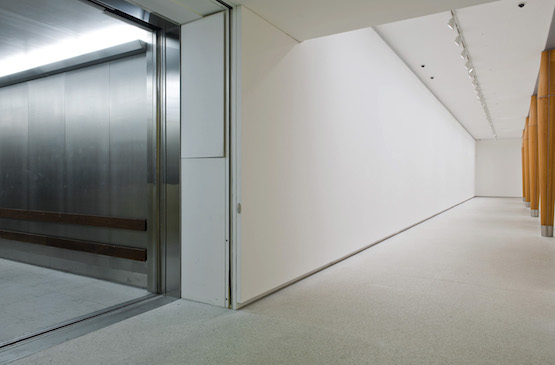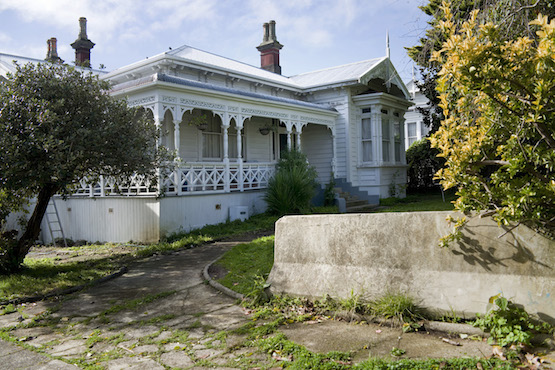Luke Willis Thompson
Photo: Tash Hopkins

Photo: Tash Hopkins
Luke Willis Thompson is the winner of this year's Walters Prize—the prestigious biannual award given to an outstanding work of contemporary New Zealand art.
Thompson's winning piece takes the form of a journey beginning in the exhibition spaces at the Auckland Art Gallery. It is an unusual and remarkable work that was described by Walters judge Charles Esche as an 'extraordinary intrusion of art into daily life that cuts through the protocols of the exhibition system like a knife.'
KBCCan you tell me about your Walters Prize work, which, if I have it right, is titled inthisholeonthisislandwhereIam? This project was only very sparingly described to visitors who were invited to take part, and the Auckland Art Gallery did not engage in a great deal of discussion about its activities. Now that the work has finished what can you say about it? How would you like to describe this project?
LWTNearly correct: it is titled inthisholeonthisislandwhereiam. There's no capital on the last 'I.' And it's not really 'called' that, as I've always hoped the audience wouldn't say it aloud. It's designed to be read on a page. Also, I should add, where I hope it yaws the formatting.
The work has a kind of tri-fold structure. It consists of the ferrying of audience members in a prepaid taxi from an emptied gallery or museum, through a choreographed route of the city, and arriving at a villa, that is lived in, but temporarily shared as an artwork. The work allows for an indeterminate amount of time to look through the house and its contents and the taxi will take you back to the gallery when you decide its ready to leave.
It's an interesting question whether the work being over should change the status of this interview because, as you know, one requirement of the work was for the museum staff not to describe the piece in advance to the potential audience or the drivers. My gallerists and myself have all been rather reticent in our communication on what the work is.
However it's maybe a good point to note this was never to build suspense or any other kind of showmanship, it's simply because the contents of both the house and the streets you follow through don't actually have any prescribed or fixed meanings. The work overall references my own biography so there are signifiers of what constituted my life, in terms of objects or materials that are codified racially, or socioeconomically, but none of these things can really be described accurately either because my audience is not homogenous. The work can be seen as facilitating moments of demarcated otherness, or of performed familiarity. In most cases, it was a mixture of both.
I decided I wanted to invest in the image of an empty gallery.
KBCCan you talk about the development of the corridor in the Auckland Art Gallery space? It seemed to me that this was a really important new part of the AAG iteration of this work. The corridor offered somewhere for the taxi driver to wait or be visually present in the gallery, but also worked to demarcate an empty passageway—a kind of statement that 'the journey starts here.' Any thoughts?
LWTThe corridor was a symptom of the problem of migrating the exhibition from its original departure point, which was the commercial gallery Hopkinson Mossman in 2012, to the Auckland Art Gallery in 2014. This change of context needed to be addressed first. The act of leaving a commercial gallery empty in comparison to asking a public institution to refrain from showing work differs in many ways because of the expectations of performance between these spheres.
Where an empty dealer gallery still displays its real estate as well as the symbolic capital of the artist, a public institution left empty can be seen as negating its responsibility, not just to an audience who might feel a kind of common ownership of the institution, but to other artworks or artists in its collection that could be displayed in its place. Importantly to me, a public institution today is often heavily invested in a discourse around education and around the communities it serves, but without art to hide behind, the institution has its commitment to these promises on display.
I decided I wanted to invest in the image of an empty gallery. So we built a corridor that, from the entrance, visually distorted itself to appear as a dead-end rectangular space. The proportions were dictated by placing a wall directly behind a set of columns. This was infuriating for the exhibition team because they typically need to spend resources on physically covering these columns so that they don't interfere visually with the works on display.
This wall became, in my mind, not an empty space but a piece of architecture of refusal, a kind of spatial hand over fist. From there, we exposed a secret wall that led to the service elevator, forming a route that moved an audience through the security channels of the institution. I could say an influence at this point was the essay The Cathedral and the Bazaar: if the house is representative of a kind open source market place, I needed to expose the cathedral. The corridor therefore was my first indictment.
And as someone who loves art, I don't want to be asked to take a test where a maker has prefigured the answers ...
KBC'Exposing the cathedral' is such an evocative means of describing what is at play in your works. As I understand it, the software developer Eric Raymond's essay refers to more hierarchal forms of developing open source software (the cathedral) and less contained, more dispersive models (the bazaar). I'm wondering if you are interested in artworks as systems? The Walters Prize work was procedural and it had a circular structure. It asked that the viewer follow a loose routine, but this activity was never ritualistic or ceremonial. Were you thinking of this work as a kind of autonomous mechanism? A mechanism of critique?
LWTI have a formula that I use to understand art, but I'll say in advance it's by no means original. It's my understanding that what art can do is to divide an object into both itself and a kind of metaphysical example of itself. It's important to remember the object keeps its umbilical relationship to the world—it's still bonded to the world even when it's dragged into a gallery. But it also allows us to see it as indicative of wider or larger forces that it might represent. Because of this schema, I don't feel art needs to do much more than reference the complexity of the world that's already there.
The Walters work, I think, illustrates this system well. The house has interesting elements independent of whether or not it's an artwork, but as an artwork it becomes expansive in its ability to be an index for societal forces, or an experience for political or ethical transformation, or a kind of prototype for a future museum. Where the piece differs from other artworks that have tested this, is that it's not usual that the work in the world, the metaphysical version, and the work 'in' the gallery all happen to occur in the exact same place.
I disagree with you slightly when you say it was never ritualistic. I feel that word has a stigma attached to it that has an underlying codification as underdeveloped. I would sometimes hear the work was akin to visiting an open home, or to clearing a house after a relative had died. Both these activities are ritualized practices and ones I'm open to the work to recall. More importantly, I think as art aficionados, we engage in a very practiced ritual of looking constantly. So to me the visiting of exhibition is already a ritual, and this work had the actual act of visiting of an exhibition as a large aspect to its conceptual makeup.
KBCI'm curious about the potential of unease in your works. These works illuminate privileges and inequities—the imbalance of social and political power. But rather than making a forthright argument against them, they seem to implicate or entangle the viewer in more ethically troubling ways. Unease is different from anger or outrage; it makes you quietly grind your teeth but it doesn't offer an explicit critique, it doesn't make you shout. Is this something you are interested in?
LWTI truly think there isn't an argument one can make non-specifically against that imbalance of power, aside from a very obvious one: that the systems that have led to these inequalities don't serve us well, and that we need new hypotheses. As often as that needs to be vocalized it doesn't mean that an art interested in that future necessarily needs to reiterate that in the same way. A lot of the experiences that were most influential in shaping my political thinking didn't happen to me by choice, and personally when I think about my exhibitions this sometimes guides my decision-making.
Another factor that might influence this sense of unease, is that I don't make exhibitions where I feel I know what's going to happen. I try to set up factors that lead an audience member to have to embody a scenario, or a position, and these are sometimes personally challenging, and sometimes ethically challenging. But I hope that through that something can occur that makes the process worthwhile.
I want to leave the audience in a dark place, where they need to find their own ways to make sense from it. And as someone who loves art, I don't want to be asked to take a test where a maker has prefigured the answers—so I wont make exhibitions that operate like that. I think this very deliberate refusal to educate an audience beyond what is axiomatic to an artwork adds to the unease of the piece because it betrays my own lack of solutions. However, it comes from a desire for art that is beyond anything I can imagine alone. It requests company.
Can I end this on a slightly different tact? In James Baldwin's 'Letter from the region of my mind,' he asks very precisely what's going to happen to the beauty of the hallway of a project tower when liberation or equality occurs. Whenever we are asked to see beauty in poverty or its inverse, we know we are in very troubled territory. Hannah Arendt wrote back in following Baldwin's essay, where she tries to render the unease of Baldwin's idea into an argument. In doing so, she collapses what is so political about his question into a clear polemic against oppression. What fails of course, is that Baldwin wasn't making an argument, he was forcing his audience to try and re-evaluate how attached we are to the by-products of pain. A task that obviously has no clear answer. When I think about my own relationship to unease, it comes by a similar route, a form of thinking about life directly and politically, without policing.—[O]










